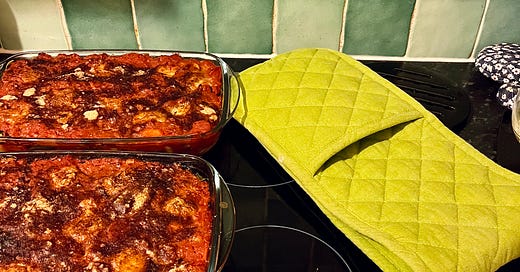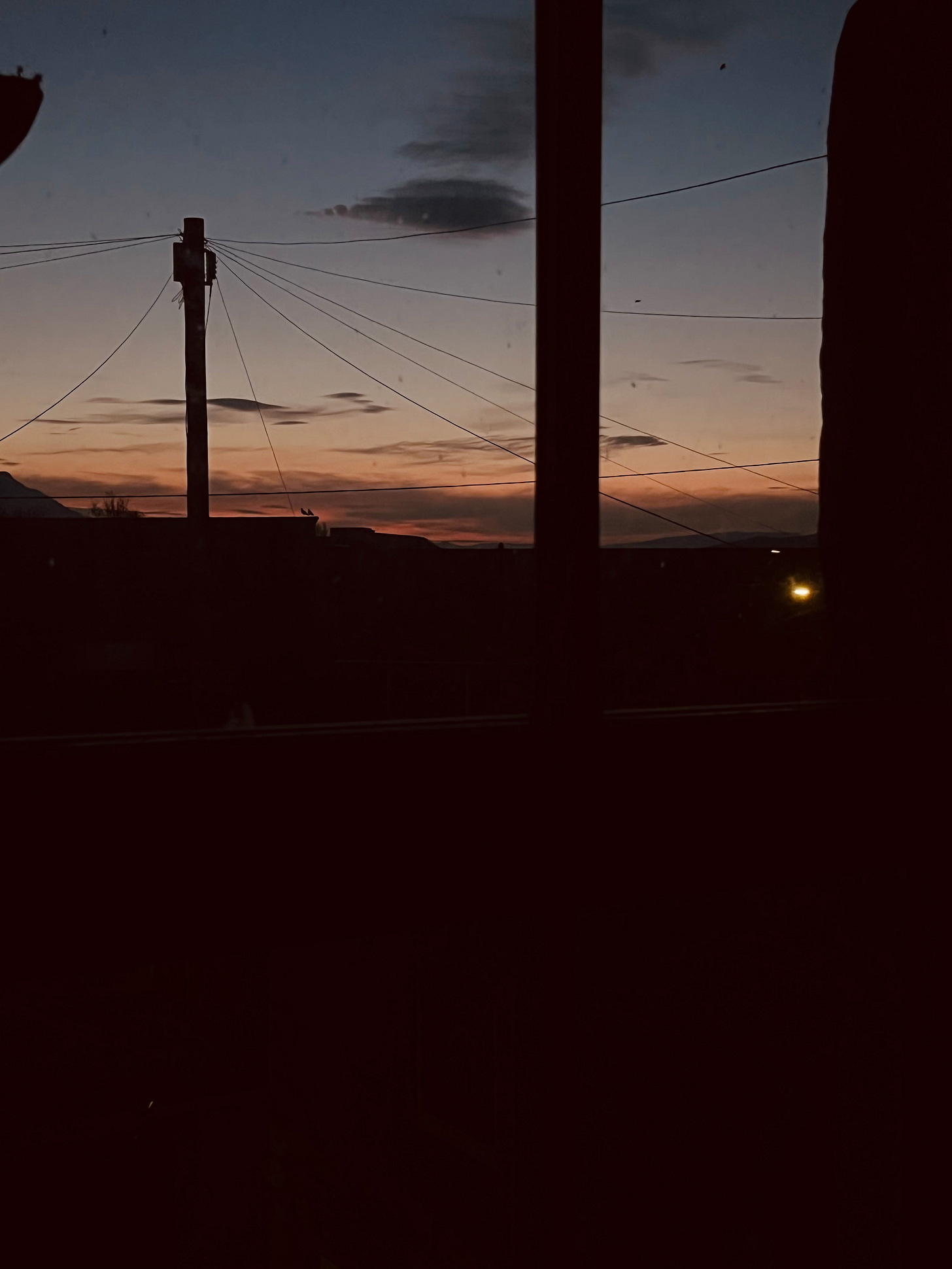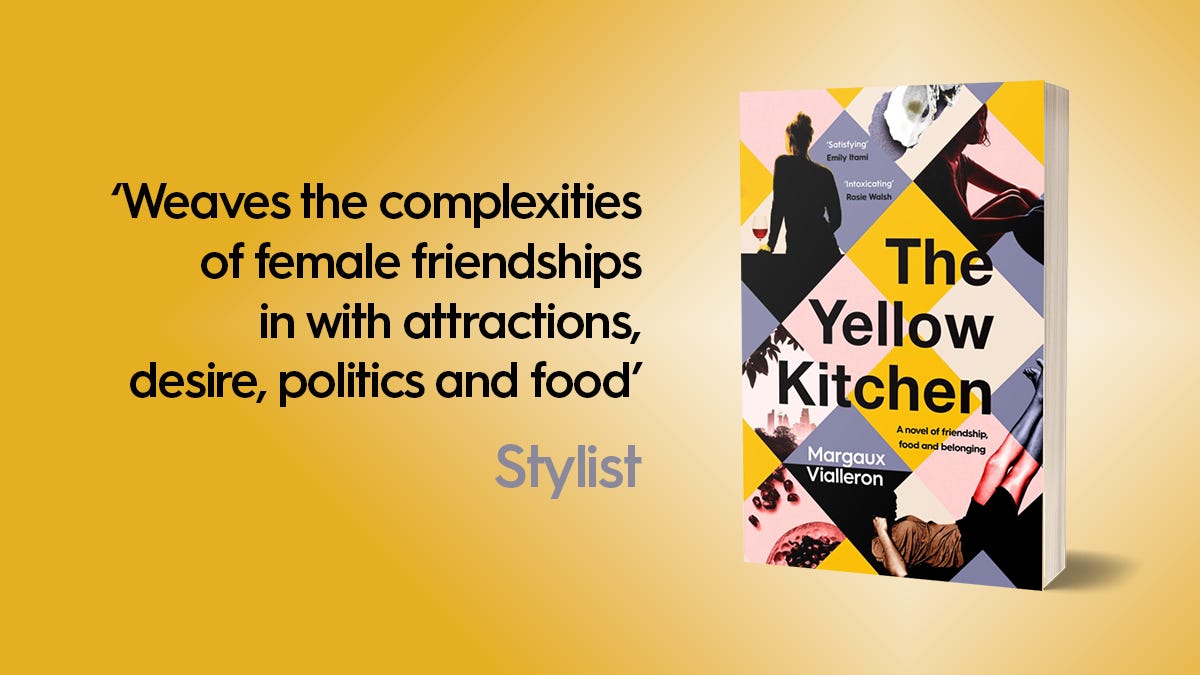Walking, Talking: The Recipe is a Compound
a Welsh poetry anthology, practicalities with Marguerite Duras and a pasta bake
Lord of the Running Rivers,
I was given two languages
to speak or, rather, they have spoken me
through different landscapes from a common spring.
– Gwyneth Lewis
So begins the anthology of Welsh women’s poetry (1460-2001), edited by Katie Gramich and Catherine Brennan, I found on the bedside table where I stayed during the Easter holiday. I had travelled to Porthmadog, a harbour town located on the Glaslyn Estuary in north Wales, with V. and L. I had also packed a very good book with me (Trespasses by Louise Kennedy, which I highly recommend), and yet I swapped the novel for this anthology because I craved to hear the languages I read while I was away from home.
The poetry collection opens with a preamble about the Celtic bardic tradition, an oral means that goes back to the origins of storytelling, a word of mouth for stories and folklore to endure time. To speak to remember truths is something that reconciles with my novelist heart. As they introduce the anthology, Gramich and Brennan explain that Welsh women poets have been active from the earliest of times despite the tradition having been widely assigned to male poets. The anthology travels from early poets and their ‘joie de vivre’ to the nonconformists during the period of Methodist revival, all the way to more recent voices.
thick milky bubbles a pebbly brandy sea
the colour of shandy a sapphire-blue flash trout scales
molten silver prismatic thick fudgy toffee
a dish of glue orange-gold brazen mango
poison-liquid of the hazelnut liqueur
– extract from Acid Sunset by Elin Llwyd Morgan
The anthology also includes a fascinating ‘Note on the Translations’ in which the editors talk about the challenges attached to the task – verses in the traditional bardic have strict metres and the different textures between English and Welsh make these patterns bleed. Questions of syllables and rhyming couplets, I think translators are brilliant minds.
We shared some seafood for dinner and there I found my favourite kind of saltiness.
The next day, I ran errands on the high street. The woman behind the till asked me if she could practise her French, to which I nodded, and she said the price: quatorze pounds 89. She stopped and I acknowledged how absurd that decimal is – the price was quatre-vingt-dix-neuf (99). We discussed this briefly and she told me how to say 99 in Welsh and I confessed that I have no clue where to start with saying the number back to her. She asked how long we were staying – two days, not long enough to learn Welsh – and I asked if she had any tips for us. She wrote a few verses:
I see a sign and seeing a sign is something I enjoy.
We spent the evening playing games of darts at the pub and we tragically burned the frozen pizza we had bought for dinner on the way back. The following day, we travelled to Criccieth and we ordered sea bass tacos, crab rolls, fish goujons and skinny fries from Dylan’s truck. A good lunch.
Practicalities, you may think.
I owe this parallel to Marguerite Duras. In her kitchen in Neauphle-le-Château, Duras had pinned a list of her ‘must-have cupboard ingredients’, which included products like salt, coffee, wine, butter and bleach. In La vie matérielle (1987), I read that Duras kept the same list on the wall throughout her life – the list was never amended for the simple reason Marguerite Duras was the one who had pencilled it. ‘Parce que c’était moi qui l’avais écrite’, she explained with the intimate confidence of her domesticity.
La vie matérielle was translated into English by Barbara Bray as Practicalities (1993, Grove Press) and is a collection of transcribed conversations between Duras and her friend Jérôme Beaujour. Marguerite Duras speaks of a back and forth between ‘me’ and ‘me’; ‘you’ and ‘me’, among a common time. She shares that she had doubts about publishing the collection initially – ‘a book without beginning, end, or middle’ – until she realised this book is removed from the novel form thus closer to the book form. This is a reading, a spoken collection.
In the extract in which Duras details the pinned list of ingredients, she goes on talking about the social norms and hierarchies that separate ‘the order of the exterior’, which is the designing of a home (e.g., at visitor’s sight), and ‘the order of the interior’, that relates to ideas and emotions, inside a household. Marguerite Duras speaks about her mother next, before weaving through descriptions of the home and its tsunami of practicalities – to clean, feed, fix; to buy new cleaning products, toys for the children; to host – that invade women’s space and prevent them from having practicalities of their own. The exterior prevails over the interior, safeguarding an interior for others sustain perceptions of the exterior, and vice versa.
I return to this passage often. I disagree with some of Duras’ examples, accounting for a generation between when she was saying/writing this and me reading, acknowledging her personal experience being removed from my individuality, still I reckon with her words. It’s the list of pinned ingredients that I return to. The one list she couldn’t step away from despite the waves of products that became available since she had first written it. What I take away from these pages is that domesticity is a compound made of the interior and the exterior. Writing is a compound made of written and spoken words; recipe writing is a compound made of emotions and practicalities.
Back in Wales with V. and L., we hiked until the summit of Snowdon. We followed the Ranger’s path – purple stones and bright blue sky – on the way up, and the Rhyd Ddu path on the way down – wildflower lawns. We ate Babybels and great sandwiches made of wholemeal pitta, hummus and beetroots; pesto and lettuce. We talked and we walked, and we shared practicalities. Perhaps I’m making up another sign just so I can see one, but the reason I’m telling you this is because I cooked something again in Wales. From one week to another, I’m writing this newsletter in praise of making up recipes as opposed to doing the same old trick.
The recipe as a composition, a blend between poetics of the interior and the exterior, a course of practicalities because we were three hungry hikers.
Last Saturday was our last night in Porthmadog, and we made a pasta bake. We arrived at the supermarket late in the day and the aisles were filled with shoppers ahead of the bank holiday festivities. This is when we started writing a recipe, chatting and picking ingredients. The good thing about a pasta bake is that anything can be done with it, regardless of your personal list of pinned ingredients – it satisfies a craving as much as it indulges shelf leftovers. We agreed this one pasta bake had to be earthy and generous, so we bought:
Conchiglie pasta n. 50
Carrots, peeled and sliced
Leeks, sliced
Asparagus, roughly chopped
Chestnut mushrooms, sliced
Spinach
Mozzarella, roughly chopped
Canned tomatoes
Parmesan cheese, grated
Paprika
Salt and pepper
In a pan, fry up the carrots and leeks gently. Sprinkle some paprika, add the asparagus and mushrooms. Cook until the vegetables are tender. Pour in the canned tomatoes, reduce the heat to a minimum and simmer.
In the meantime, bring a large pot of water to the boil. Salt and cook the pasta following the package instructions.
Preheat the oven to 200C fan. Bring a large oven tray out (or two!) and start layering the pasta bake in this order: pasta; uncooked spinach and half of the Mozzarella cheese; vegetables, and here we added more tomato sauce because we wanted it saucy; Parmesan cheese and the other half of the Mozzarella, black pepper to finish.
Bake until the top is crispy. You’re getting close when the dish starts bubbling from the bottom (the sauce is cooking and reducing).
We stayed in the kitchen for the forty minutes it took the pasta bake to cook and we talked about love. I’ve always been one of those who hang out in the kitchen at parties, and I don’t want this to change. Chat away, we’re baking some practicalities over here.
Pasta, anyone?
Margaux
PS. I’ve started an Onion Papers affiliated bookshop on Bookshop.org where you can browse most of the books I mention and discuss in the newsletter (when they are available and/or exist in translation). If there is an edition you’re looking for in particular, DM me and I will be happy to help. So far I’ve created a shelf for the 2023 editions and I will work my way through last year too.
Thanks for being here! This newsletter comes out every other Thursday (Friday?), and you can fuel it by subscribing below or forwarding it to a friend. You can also support my work by buying a copy of my debut novel, The Yellow Kitchen. Merci <3












